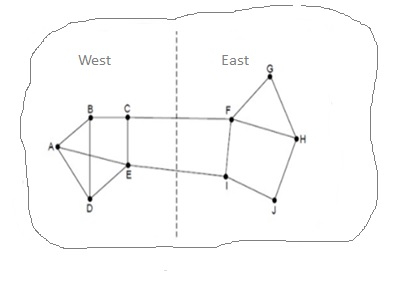
 Data Structure
Data Structure Networking
Networking RDBMS
RDBMS Operating System
Operating System Java
Java MS Excel
MS Excel iOS
iOS HTML
HTML CSS
CSS Android
Android Python
Python C Programming
C Programming C++
C++ C#
C# MongoDB
MongoDB MySQL
MySQL Javascript
Javascript PHP
PHP
- Selected Reading
- UPSC IAS Exams Notes
- Developer's Best Practices
- Questions and Answers
- Effective Resume Writing
- HR Interview Questions
- Computer Glossary
- Who is Who
What is traffic aware routing in computer networks?
Traffic awareness is one of the approaches for congestion control over the network. The basic way to avoid congestion is to build a network that is well matched to the traffic that it carries. If more traffic is directed but a low-bandwidth link is available, congestion occurs.
The main goal of traffic aware routing is to identify the best routes by considering the load, set the link weight to be a function of fixed link bandwidth and propagation delay and the variable measured load or average queuing delay.
Least-weight paths will then favour paths that are more lightly loaded, remaining all are equal.
The traffic aware routing is diagrammatically represented as follows −

Explanation
Step 1 − Consider a network which is divided into two parts, East and West both are connected by links CF and EI.
Step 2 − Suppose most of the traffic in between East and West is using link CF, and as a result CF link is heavily loaded with long delays. Including queueing delay in the weight which is used for shortest path calculation will make EI more attractive.
Step 3 − After installing the new routing tables, most of East-West traffic will now go over the EI link. As a result in the next update CF link will appear to be the shortest path.
Step 4 − As a result the routing tables may oscillate widely, leading to erratic routing and many potential problems.
Step 5 − If we consider only bandwidth and propagation delay by ignoring the load, this problem does not occur. Attempts to include load but change the weights within routing scheme to shift traffic across routes arrow range only to slow down routing oscillations.
Step 6 − Two techniques can contribute for successful solution, which are as follows −
- Multipath routing
- The routing scheme to shift traffic across routes.
Features
The features of traffic aware routing are as follows −
It is one of the congestion control techniques.
To utilise most existing network capacity, routers can be tailored to traffic patterns making them active during daytime when network users are using more and sleep in different time zones.
Roots can be changed to shift traffic away because of heavily used paths.
Network Traffic can be split across multiple paths.

